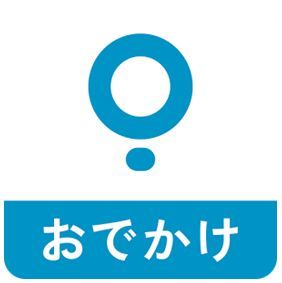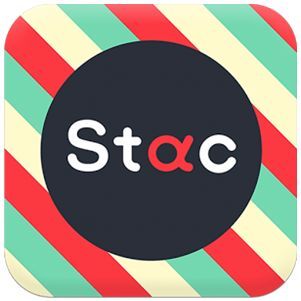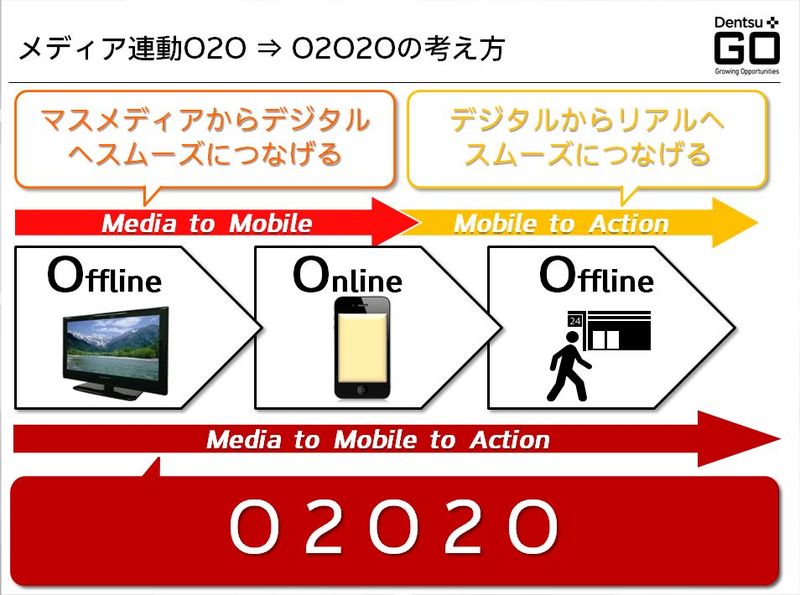Smartphone business isn't just about creating apps to succeed. Rather, leveraging existing platform apps offers significant potential to efficiently expand business opportunities. Building on the points introduced in Part 1, Part 2 specifically introduces platform apps effective for smartphone business, viewed from the perspectives of O2O, second screens, and app tie-ins.
Creating New Ecosystems with Everyday Apps
To create a slightly more advanced "smartphone experience," we introduce platform apps from three angles: O2O, second screen, and app tie-ups. First is "SmaPo (*1)," an O2O (Online to Offline) platform connecting smartphones to physical stores.

This service rewards users who visit stores with points, encouraging new visits and repeat business. When users launch Sumapo, they can search for nearby stores where they can check in. By visiting and checking in, they earn points. These points are compatible across participating stores, mutually motivating visits. Although the service has been available for just under three years, it has garnered attention from various media outlets as a groundbreaking O2O service. Pilot tests have also demonstrated its ability to drive actual purchases. A new product check-in feature has been introduced. Users check in at a store, view a product, and answer a quiz to earn points. Furthermore, because it uses the core technology of acoustic communication, it is less constrained by individual devices and enables pinpoint customer attraction to narrow areas like specific store sections.
The second example is a second-screen application. This approach treats smartphones as a second screen launched while watching TV, connecting mass media to smartphones—referred to as Offline to Online. The platform for this is the program guide app "GGM (G Guide Mobile) (*2)", which currently boasts 17 million downloads.

It features real-time audio recognition for TV programs in the Tokyo-Osaka area. When users launch the app while watching TV, it recognizes which program they are watching via voice recognition, enabling synchronization with commercials. This allows for real-time approaches to TV viewers, such as distributing coupons or digital content, or directing them to company websites. For example, Intelligence Inc., operator of the part-time job search service "an," implemented a new campaign format without fixed time slots. This allowed people who happened to catch a spot commercial to apply. GGM has high affinity with commercials. By using voice recognition to push corporate information, it enables a new approach that uses serendipity as a hook to reach potential customers who might not take action spontaneously.
Connecting O2O with second screens enables consistent campaigns spanning mass media to physical stores. This is termed O2O2O (Offline to Online to Offline).
An example of this platform is "Stac" (※3).

It's a stamp rally-style campaign app that allows users to collect stamps via voice recognition or QR codes at any contact point—TV, street ads, or in-store. Using broadcasts as a starting point, it guides users to physical locations via their smartphones, boosting the effectiveness of cross-media campaigns. By designing incentives awarded upon completing the stamp rally, it motivates users to enjoyably increase their product engagement. For companies, this enables content communication with both depth and breadth, even without requiring users to use their own app.
The third approach is app tie-ins. This concept leverages everyday apps for corporate communication. As an example, we introduce the calendar app "Jorte".
 Jorte integrates with Google Calendar and Facebook and offers customization. It has surpassed 20 million downloads globally and is approaching 10 million in Japan. Companies with strong content can embed original material into Jorte as a "daily calendar." Those without such content can use the "event calendar" feature to display company-related information as part of users' daily schedules. For example, corporate information like "Today's Recommended Recipe," "Time Sale Information," or "New Product News" can be seamlessly integrated into the schedules of targeted users. Users open the app at least once daily to check their schedule, and by overlaying this content onto their schedule, it effectively creates new events, driving traffic both online and offline.
Jorte integrates with Google Calendar and Facebook and offers customization. It has surpassed 20 million downloads globally and is approaching 10 million in Japan. Companies with strong content can embed original material into Jorte as a "daily calendar." Those without such content can use the "event calendar" feature to display company-related information as part of users' daily schedules. For example, corporate information like "Today's Recommended Recipe," "Time Sale Information," or "New Product News" can be seamlessly integrated into the schedules of targeted users. Users open the app at least once daily to check their schedule, and by overlaying this content onto their schedule, it effectively creates new events, driving traffic both online and offline.
While leveraging cutting-edge technology is necessary, the most crucial aspect in smartphone business is the perspective of what users already use regularly or would want to use. Utilizing foundational technologies like voice recognition, usable across any device, is also vital. Utilizing LINE or Facebook is effective, and creating proprietary apps isn't ruled out, but traditional approaches risk being buried. A broader perspective, considering the creation of new ecosystems, is worth exploring. This includes paid media advertising as a starting point. On the other hand, companies possess owned media where CRM drives repeat engagement, and loyalty points serve as a customer connection tool. Furthermore, earned media can facilitate sharing of purchased items, with rewards offered for such engagement. Smartphones constantly mediate these interactions, enabling O2O (Online-to-Offline) and second-screen strategies. As the entire ecosystem connects, a personalized delivery framework built on a DMP (Data Management Platform) emerges, making content marketing more effective. This also enables omnichannel initiatives and the utilization of big data as foundational support.

I believe we can create an ecosystem where the everyday smartphone app exists at the center of this.
(※1) 'SmaPo'... A pioneering O2O service developed by Spotlight Inc. using proprietary mobile communication technology. It's a smartphone-based common point system for store visits. By downloading the free app and visiting partner brands (major retailers, large convenience stores, etc.), users accumulate common points and other benefits simply by visiting the store, regardless of purchasing anything. Spotlight and Dentsu Inc. have a business partnership providing corporate marketing support services utilizing this store visit point system.
(※2) 'G Guide Mobile ' ... An electronic program guide (EPG) service for mobile phone users provided by Interactive Program Guide, Inc. (IPG). Its "Voice Catch" feature enables use as a second-screen device for TV broadcasts, allowing for new viewing experiences such as distributing coupons after watching TV or checking special program information during viewing. The Voice Catch function is a unique program/commercial matching service that utilizes metadata from IPG Inc.'s "minds" (Meta Information Distribution System) and Dentsu Inc.'s campaign platform "Click AD®" voice recognition technology and material ID management technology.
(※3) 'Stac'... A smartphone app provided by Japan Eviccer Inc. that accumulates "something extra for daily life." Using voice recognition technology, users automatically collect stamps simply by launching the app at designated locations (stamp spots) where specified sounds play, which can be exchanged for valuable benefits. For businesses and stores, it provides a campaign platform serving as a customer attraction and sales promotion tool compatible with media mix strategies. Nippon Evicxer and Dentsu Inc. have formed a partnership for corporate marketing support services utilizing "Stac".
(※4) 'Jorte'... A system planner/calendar app provided by Jorte Inc. It strives to closely resemble the feel of a real system planner, with a strong focus on visual appeal and ease of use. Jorte and Dentsu Inc. have formed a partnership for corporate marketing support services utilizing "Jorte".





 Jorte integrates with Google Calendar and Facebook and offers customization. It has surpassed 20 million downloads globally and is approaching 10 million in Japan. Companies with strong content can embed original material into Jorte as a "daily calendar." Those without such content can use the "event calendar" feature to display company-related information as part of users' daily schedules. For example, corporate information like "Today's Recommended Recipe," "Time Sale Information," or "New Product News" can be seamlessly integrated into the schedules of targeted users. Users open the app at least once daily to check their schedule, and by overlaying this content onto their schedule, it effectively creates new events, driving traffic both online and offline.
Jorte integrates with Google Calendar and Facebook and offers customization. It has surpassed 20 million downloads globally and is approaching 10 million in Japan. Companies with strong content can embed original material into Jorte as a "daily calendar." Those without such content can use the "event calendar" feature to display company-related information as part of users' daily schedules. For example, corporate information like "Today's Recommended Recipe," "Time Sale Information," or "New Product News" can be seamlessly integrated into the schedules of targeted users. Users open the app at least once daily to check their schedule, and by overlaying this content onto their schedule, it effectively creates new events, driving traffic both online and offline.